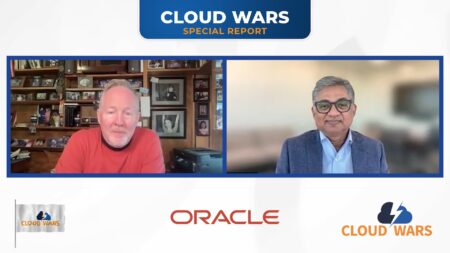Worldwide, the goods that are sold on behalf of the creating firm are sold through an indirect partner 75% of the time. In other words, 75% of the world’s goods are sold indirectly. You need only to browse your favorite online marketplace, walk through a grocery store, purchase a new TV, or buy some new technology to see this dynamic in play — the number of times we buy directly from the creator (manufacturer, designer, builder, etc.) is limited, reducing every single month as consumers and firms look to consolidate their buying and selling routes.
Due to this dynamic, I thought that today I might talk about those indirect routes to market and batter the myth that they are purely good routes only for acquisition, as nothing could be further from the truth. At this point, I have heard too many leaders, in firms that distribute indirectly, question either the cost of partnership or the efficacy of partnerships using only the metrics from customer acquisition versus looking at the more holistic customer relationship metrics you would use for traditional customer management. What’s happening here and why is it happening?
Why Use Third-Party Distribution?
Sometimes, to understand the problem, you must understand the root decision of how these firms came to distribute via an indirect route to the market. Primarily, many firms determined that having their own sales teams, stores, sites, etc. was costly, and, in many cases, impossible to justify. After all, if you are a part of something that a firm buys, then you aren’t going to have a direct relationship with it, as that just doesn’t make sense.
So, as a result, you must distribute through the route to market that makes the most sense for the customer to purchase from or your product simply won’t get purchased. Alternatively, some firms determined that hiring, training, and retaining top sales talent was a hill they could not afford to climb, so they utilized third-party partners to fill those roles with seasoned people who already had those relationships.
The use cases go on and on. However, for many firms, the reasons for third-party distribution tended to start with customer acquisition or order fulfillment. That’s where we started. Now, as the world evolves and customer expectations for customer dazzle advance, these very same firms are left with a dilemma regarding how they think about their channels and resultant partners in the lens of retention. This is a mistake of epic proportions.
The reason most firms outsourced some or all their sales to the channel was thinking of the channel as a customer ‘acquisition’ tool versus a customer ‘relationship’ tool. For most channel partners who sell or support products on behalf of a manufacturer or creator, their secret sauce is not in their keen sense of outbound marketing for prospects, it’s their ability to have a long-term relationship where the customer relies on them to supply the right answer to their needs.
The customer trusts the third party and thinks of that third party first when they are looking to make a purchasing decision because they have this relationship — that’s not pure-play acquisition only; that’s customer ownership at its purest.
Understanding Customer Ownership and Expectations
Customer ownership means that the partner, many times, is also critical to retention. I understand that many times the leaders in the firms that distribute indirectly don’t want to think that anyone else “owns the customer.” Oftentimes, this is the story, along with how they have continued to build out internal teams to “service” the customer, that they’ve told to the C-suite.
In essence, as the world changes, particularly in a digitized engagement model, this is a desperate attempt to hold onto their internal team relevancy in their organizations, and requires that these very same leaders perform ever more complicated gymnastics to put in place increasingly detrimental rules. These rules, for instance, may cover things like retention residuals for retaining a customer just so the partners don’t focus there, which puts their firms at risk.
Doing things like questioning why you would pay a partner the same to sell as to retain, limiting marketing funds for customer retention, and not having training programs to help partners retain customers all round out the trifecta of indirect distribution strategy mistakes many firms are making.
After all, we’re in a world where customer expectations for the next generation are increasingly robust, where digital marketplaces and communities are changing how our very brands are perceived in the market, and where, with inflation, many of the buyers of our goods are having to question every purchase and renewal. So, this retention impasse has to be examined and fixed to reflect our realities.
Why Indirect Routes Are Critical in Today’s Economy
This legacy way of thinking about indirect routes to market is even more critical right now, as our economy is heading towards a probable recession. Another reason this is critical is that our end-user customers will begin to question their spend for goods and services where there are renewal contracts in the light of less favorable economic conditions.
Sure, those customers may be okay with your standard direct team churn management program. However, they are often not, particularly when the solution sold is more complicated or an integral part of their operating model.
In those situations, they are very likely going to ask their trusted partner — who may or may not be the partner that sold them the solution initially — what they should do about the contract and what their options are for either renewal or a new provider, one who is more affordable or offers better value. In that situation, if you are in effect penalizing your partners for retention efforts, then why would they choose to promote your renewal versus switching their clients to a new provider that does value their efforts?
I know that some solutions are harder to switch out than others. So, the argument from legacy leaders is often “our solution is too complex to just rip and replace.” Those leaders are often wrong. Time and experience destroy all the benefits of complexity as a switching barrier. We see that coming into play all too often in channels where the retention play by the channel is undervalued.
As a result, these firms, which were arrogant enough to believe that they had a firm switching barrier, saw lower upsell numbers of their solution and limited upgrades. Furthermore, they saw customers ultimately switching because they did not get the level of benefit that would justify staying with their existing solution. The switching barrier was also overrun by their strong and negative feelings about their experience with the brand.
You could say this is the opposite of customer dazzle; it’s customer dismay.
5 Recommendations for Customer Retention
How do you avoid this perilous future? Here’s are my fast recommendations:
- Invest in creating a retention channel strategy that clearly identifies, by customer segment, the key retention partner profiles and the retention ‘plays’ you need to enable through them. Keep in mind these retention partners may not be the same as your acquisition partners. It will be dependent on your industry, solution, and customer types. Be open to a retention strategy that uses a partner to retain accounts or customers you sold via your direct sales force, not just your indirect sold deals.
- Create training and enablement programs for retention. Show your partners the ‘secret sauce’ of your churn management programs. Learn from them how to enhance your and their efforts through how they work with customers. Make sure you include templated marketing materials to help partners tell your story. Market Development Funds (MDF) should be eligible for these activities
- Spend appropriately on the automation and tools needed to make retention seamless. This includes being able to segregate customers into churn avoidance treatment modules that allow you to have the data and analytics to understand the cause and effect of your programs.
- Talk about retention in your QBRs, Ops Reviews, and partner meetings with clear metrics for your partners to attain.
- Finally, change your C-suite talk track about the channel to include the very important action of customer relationship partnering and the impact on your retention efforts overall.
Keeping your channel’s eye on the revenue and the retention of the revenue will make all the difference in the world for your firm and your customers. Happy partnering!
Want more tech insights for the top execs? Visit the Leadership channel:







